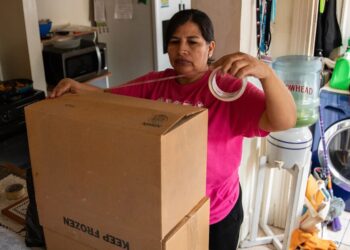It’s been one year since the city of Los Angeles began collecting money from a voter-approved tax on high-priced property sales. The measure’s goal was to raise up to $1 billion annually for new affordable housing and tenant protections. So far, results have been mixed.
Measure ULA levies a 4% tax on L.A. properties selling for $5 million or more, and a 5.5% tax on properties selling for $10 million or more. So far, revenue generated has come in far below initial projections, raising just $215 million since taking effect in April 2023. That’s a fraction of the $600 million to $1.1 billion voters were originally told the tax could yield.
Some housing policy experts also see signs that the tax could be deterring new development in a city that, under state law, needs to plan for nearly half a million new homes by 2029.
On the positive side, proponents say ULA funding has so far supported hundreds of proposed affordable housing units and staved off thousands of evictions by providing rent relief to tenants.
“Measure ULA has already proven to be one of the greatest revenue sources L.A. has ever seen for affordable housing,” said Joe Donlin, director of the United to House L.A. coalition, which backed the measure.
ULA has raised more in its first year than other initiatives, such as the city’s Measure HHH, which collected about $120 million per year for the development of permanent supportive apartments for the unhoused, Donlin said. A rush to sell off top-dollar homes before the tax took effect last year dampened revenues, he said, but ULA collections are on an upward trend.
“We think that trend is going to continue and it’s just going to…
Read the full article here







